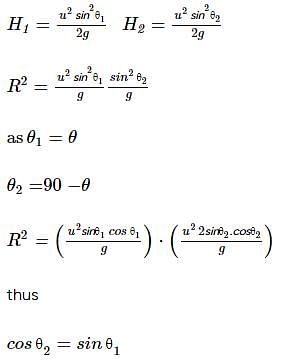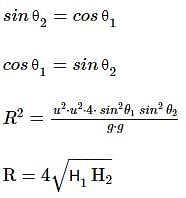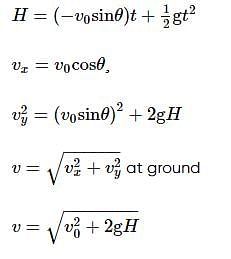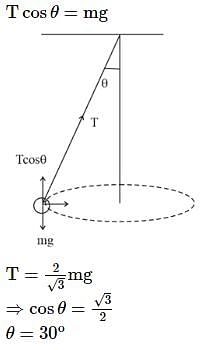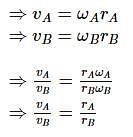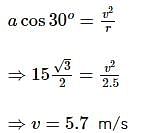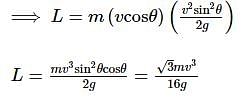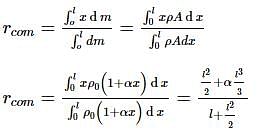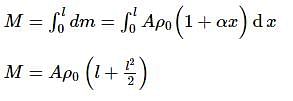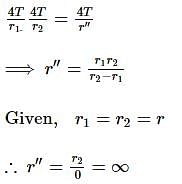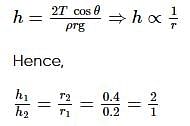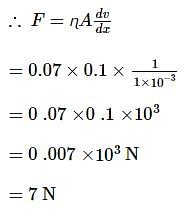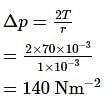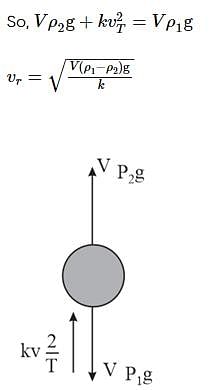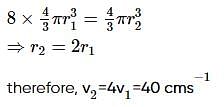BITSAT Physics Test - 3 - JEE MCQ
30 Questions MCQ Test - BITSAT Physics Test - 3
For measuring an unknown resistance, a meter bridge with a standard resistance of 90 Ώ is used. The null point indicated by the jockey is 40 cm on the standard resistance. If the scale used to measure the length of the standard resistance is accurate with a deviation of ±1 mm, the value of the unknown resistance and the deviation is
In the given circuit, the value of current flowing across the resistances A and B is
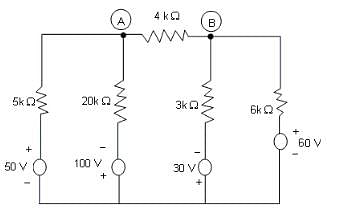

| 1 Crore+ students have signed up on EduRev. Have you? Download the App |
A coil with 400 turns and 0.1 square metre area is placed perpendicularly in a magnetic field of strength 4 × 10-5 Wb/m2. If it rotates through 90 degrees in 0.1 sec, what will be the voltage of average emf that will be induced in the coil?
What will be the focal length of the eyepiece and the objective lens of a telescope, if the angular magnification of the telescope is given to be 5 for far object. The final image is formed at infinity and the distance between the eyepiece and the objective lens of the telescope is 54 cm. (Focal length of eyepiece = fE; Focal length of objective = fO)
For a hydrogen atom, when the electron comes in the ground state from an excited state, then
Three particles A, B and C carrying respectively one, two and three positive charges on them enter into a magnetic field which is perpendicular to their velocities. If the masses of the particles A, B and C are in the ratio 1 : 2 : 3, if all of them have same kineatic energy then choose the correct statement among the following:
A wire of length l is in the form of a circular loop having one turn only. The loop is carrying a current I and induces a magnetic field of strength B1 at the centre of the loop. If the same wire is used to make a coil having two turns, then the strength of the magnetic field at the centre is B2 providing the current flowing the loop is same. The correct option is
A circular wire of radius 50 mm with 500 turns is acting as an inductor in a circuit. The approximate value of self-inductance for the wire will be
In the graph below, the deviation of a ray of light is plotted against the angle of incident i when it passes through a prism.
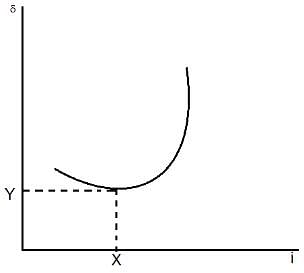
The points X and Y in the plot respectively represent
Two bodies are projected from the same point with equal speeds in such directions that they both strike the same point on a plane whose inclination is β. If α be the angle of projection of the first body with the horizontal the ratio of their times of flight is
Two stones are projected with same velocity v at an angle θ¸ and (90° − θ). If H1 and H2 are greatest heights in the two paths, what is the relation between R, H1 and H2?
A particle is projected with speed v at an angle θ(0 < θ < π/2) above the horizontal from a height H above the ground. If v = speed with which particle hits the ground and t = time taken by particle to reach ground, then
The semivertex angle of the conical pendulum through which a body can perform uniform circular motion, if the string support 2/√3 times its weight, is
Two buses A and B are moving around concentric circular paths of radii rA and rB. If the two buses complete the circular paths in the same time. The ratio of their linear speeds is
A particle moves in a straight line with variable acceleration = at ,SI units (a is +ve constant and t is time). Find the speed of the particle at t = 2s, if the velocity is +1 m/s at t = 1s
Assertion: In case of projectile motion, the magnitude of rate of change of velocity is variable.
Reason: In projectile motion, magnitude of velocity first decreases and then increases during the motion.
In the given figure, a = 15 m s−2 represents the total acceleration of a particle moving in the clockwise direction in a circle of radius R = 2.5 m at a given instant of time. The speed of the particle is

A particle of mass m is projected with a velocity v making an angle of 30° with the horizontal. The magnitude of angular momentum of the projectile about the point of projection when the particle is at its maximum height h is
Assertion: Magnitude of instantaneous velocity is equal to instantaneous speed.
Reason: Distance is nearly equal to displacement if displacement is very small.
A closed cylinder of length ' l ' containing a liquid of variable density ρ(x) = ρ0(1 + αx) is rotating about a vertical axis with an angular speed ω. Find the net force exerted by the liquid on the axis of rotation. (Take the cylinder to be massless and A = cross sectional area of cylinder, ignore the gravity) -

A uniformly tang vessel is filled with a liquid of density 900 kg m−3. The force that acts on the base of the vessel due to the liquid is (g = 10 m s−2)
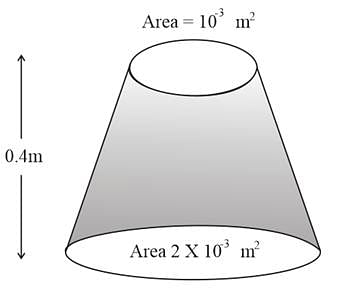
If two soap bubbles of different radii are connected by a tube
Two capillary tubes of radii 0.2 cm and 0.4 cm are dipped in the same liquid. The ratio of heights through which liquid will rise in the tubes is
A layer of glycerine of thickness 1 mm is present between a large surface area and a surface area of 0.1 m2. With what force the small surface is to be pulled, so that it can move with a velocity of 1 ms−1 1? (Given that coefficient of viscosity = 0.07 kg m−1 s−1)
To what height should a cylindrical vessel be filled with a homogeneous liquid to make the force with which the liquid presses on the sides of the vessel equal to the force exerted by the liquid on the bottom of the vessel. If should be
A spherical drop of water has radius 1 mm if surface tension of water is 70 × 10−3 Nm−1, difference of pressure between inside and outside of the spherical drop is
A mercury drop of radius 1 cm is broken into 106 droplets of equal size. The work done is (S = 35 × 10−2 Nm−1)
A spherical solid ball of volume V is made of a material of density ρ2(ρ2 < ρ1). [Assume that the liquid applies a viscous force on the ball that is proportional to the square of its speedv,ie,Fviscous = −kv2(k > 0)]. The terminal speed of the ball is
Eight equal drops of water are falling through air with a steady velocity of 10 cms−1. if the drops combine to form a single drop big size, then the terminal velocity of this big drop is



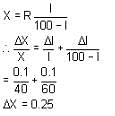
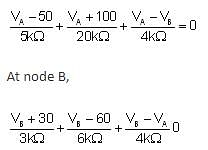


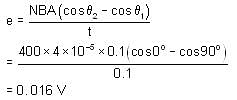
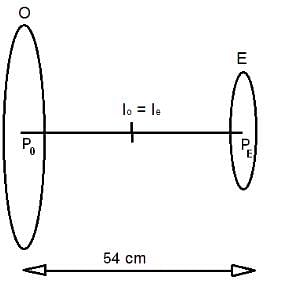

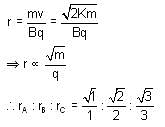

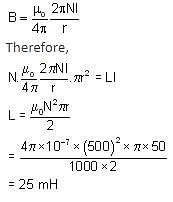


 and the point Y represents δm or minimum deviation.
and the point Y represents δm or minimum deviation.
 where b = constant and depends upon the series.
where b = constant and depends upon the series.

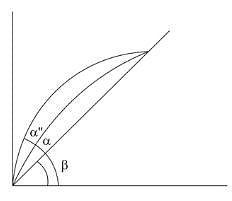

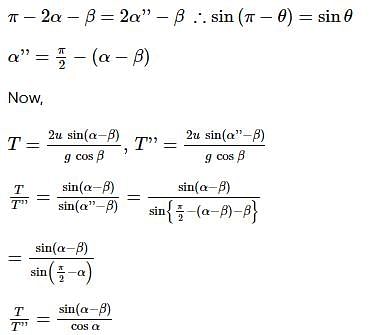
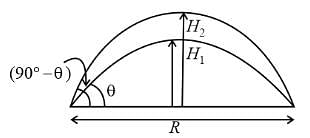
 (Range remains same, if θ2 = 90 − θ1)
(Range remains same, if θ2 = 90 − θ1) 